Of the 44 sparrow species in North America, 36 of them can be found in Texas. This astonishing proportion means that Texas boasts a higher diversity of sparrows than any other state, by far!
Since most sparrows are migratory, the southerly position of Texas makes much of the state an ideal refuge for many species during the colder months. At this time of the year, several types of sparrows will be grateful for bird food offered at your backyard bird feeder.
Other sparrows like to remain at this southerly latitude year-round, and Texas hosts some very rare species that can be found nowhere else in the country.
If you can learn every sparrow in Texas by heart, I’ll be impressed. Let’s see if we can, by learning some fun facts about each species!
Sparrows in Texas, Starting With The Most Common
House Sparrow
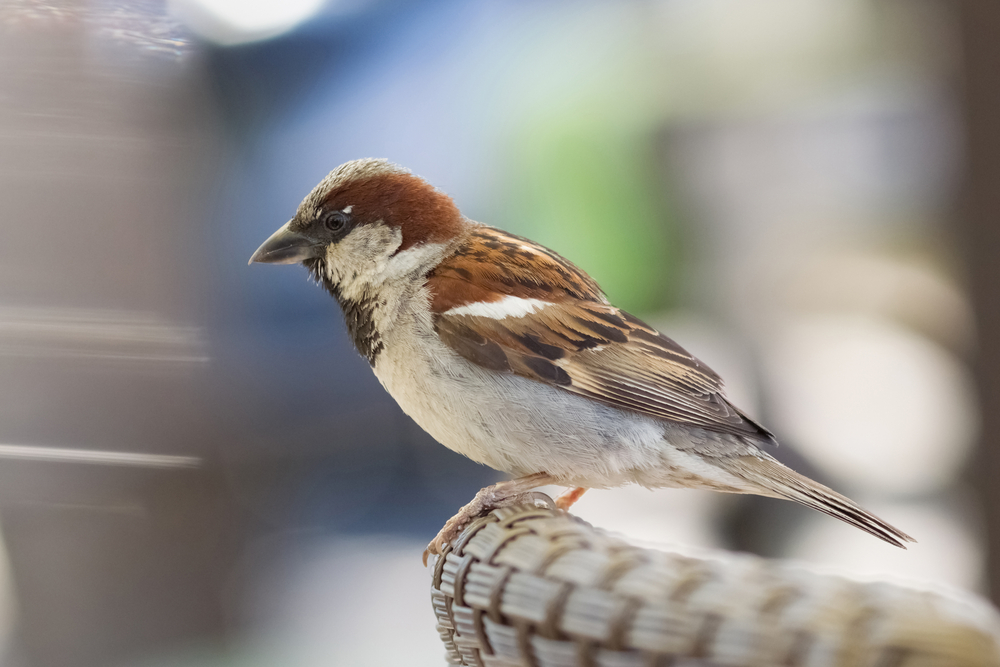
The house sparrow is by far the most common sparrow in Texas, but interestingly, it’s also the only one that’s not native! House sparrows were introduced to the USA in the 19th century and quickly spread out across the entire country.
Often seen near human habitation, these tame birds will lap up food from your backyard feeder, and can even be taught to eat from your hand!
Males are easy to recognize by their distinctive black throats and facial feathers. The plainer-looking females are rarely far from their side.
Savannah Sparrow
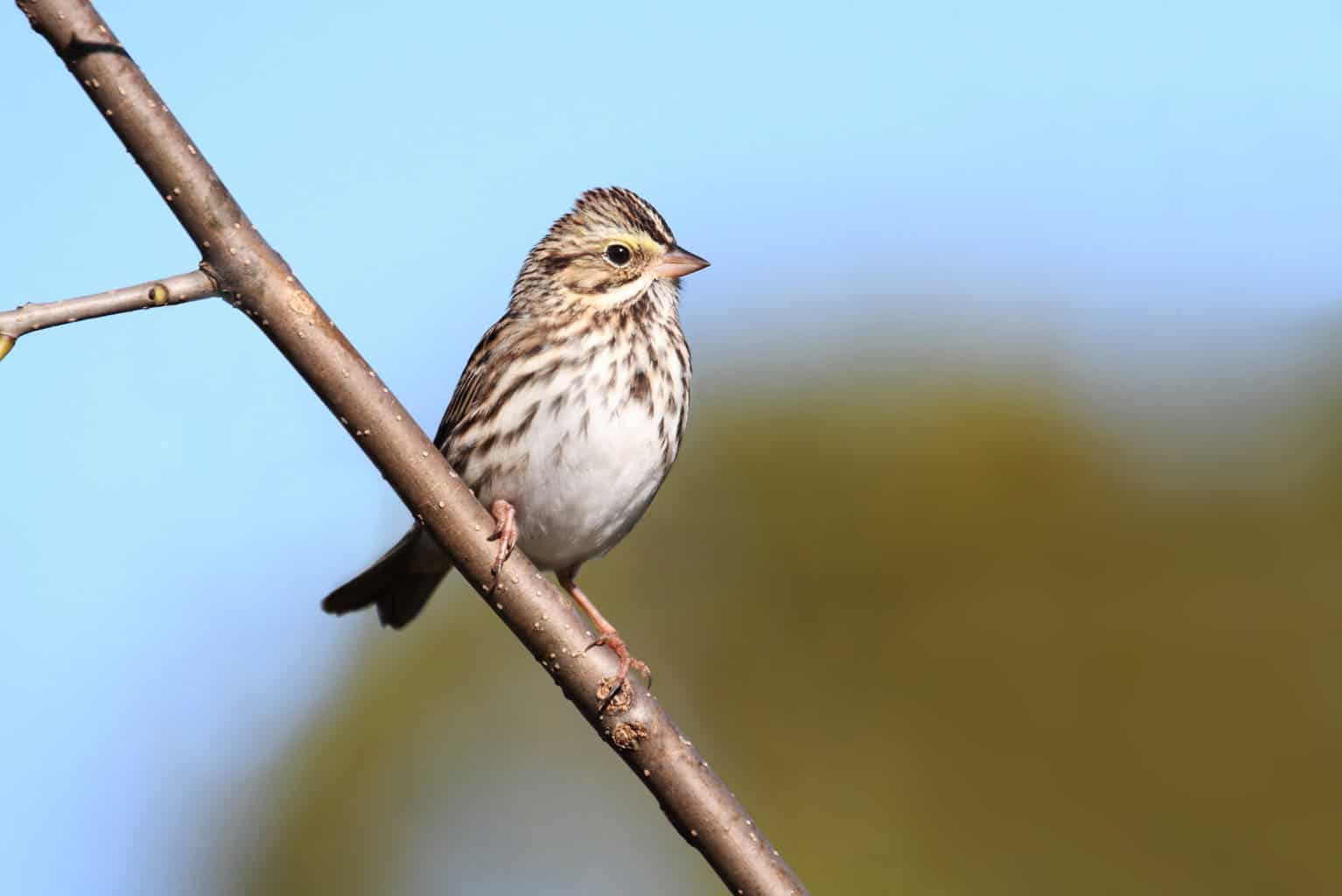
Savannah sparrows may only be winter visitors in Texas, but they are the second most frequently seen sparrow in the state overall.
From a distance, savannah sparrows may appear similar to other brown-streaked species, but get a little closer, and you’ll notice the yellow wash around this bird’s eyes – their most distinctive field mark.
Although they remain a common songbird in North America, Savannah sparrows have been declining, and are considered a threatened species by the IUCN.
Chipping Sparrow
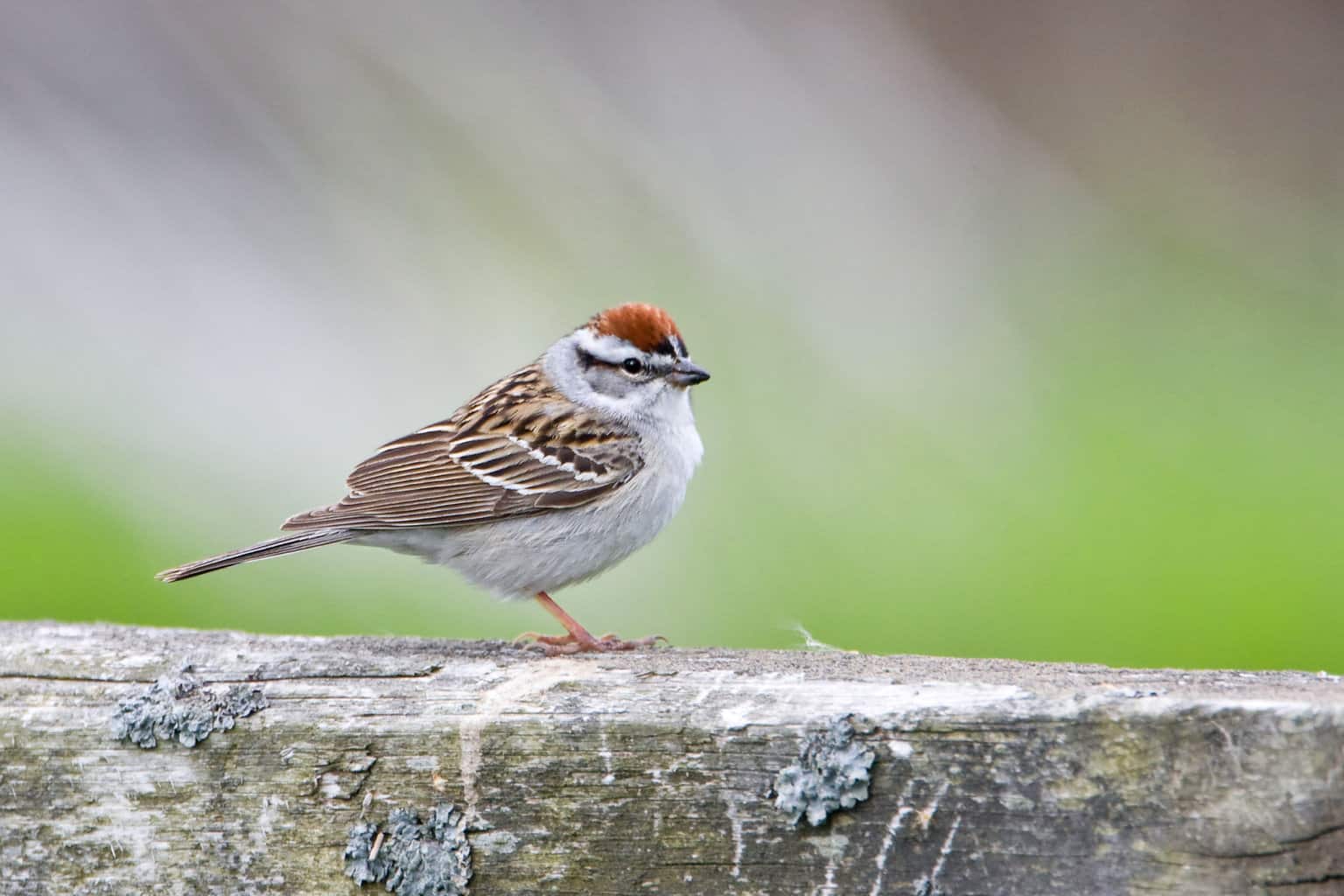
Chipping sparrows are common, small grayish birds with a black eyeline and rufous crown. They can be found in every state of the US except for Hawaii!
In Texas, they’re most commonly seen during the winter, but a few isolated regions of Texas also host breeding populations.
They are found in open woodlands, as well as leafy suburbs, and can be tempted to bird feeders by offering them black oil sunflower seeds and other grains.
Lincoln’s Sparrow

The secretive Lincoln’s sparrow is difficult to identify by sight, but its sweet and simple song is among the most tuneful of all sparrows in North America.
Although they’re only a cold-season visitor in Texas, you may still be lucky enough to hear them singing in late winter as they prepare for their long flight back to their northerly breeding grounds.
White-crowned Sparrow

The black and white striped head and yellowish bill of the white-crowned sparrow make them an easy species to identify.
You’ll only see them in Texas between October and May, when you may be able to attract them to your backyard bird feeder by offering sunflower seeds and cracked corn.
White-throated Sparrow
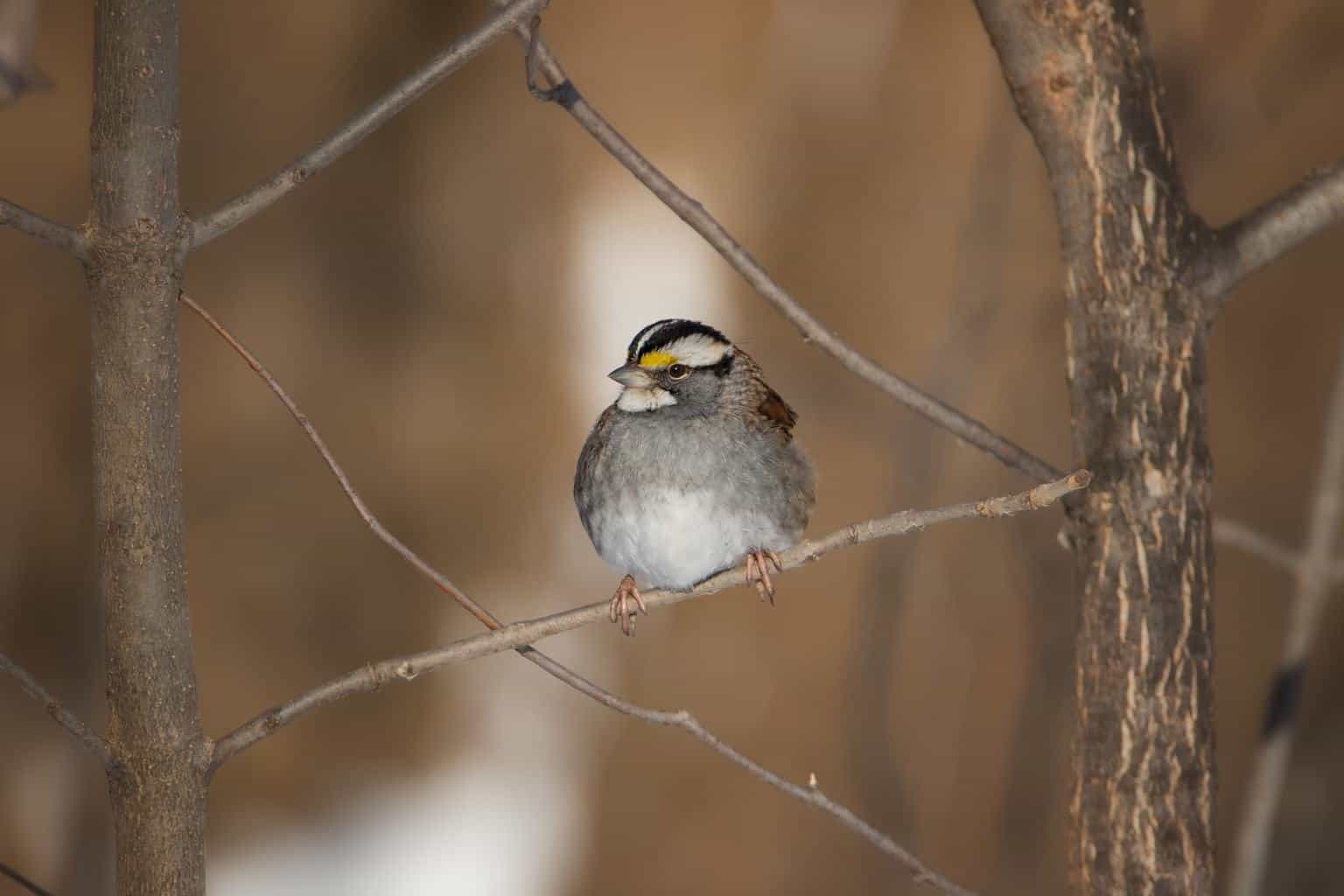
True to its name, the white-throated sparrow does indeed have a white throat, as well as yellow ‘eyebrows’, and black and white (or tan) stripes on its head.
Since this species likes eating berries, you can attract them to your garden by planting shrubs such as dogwoods and Sorbus species that bear fruit in the autumn when they return from their nesting grounds.
Lark Sparrow
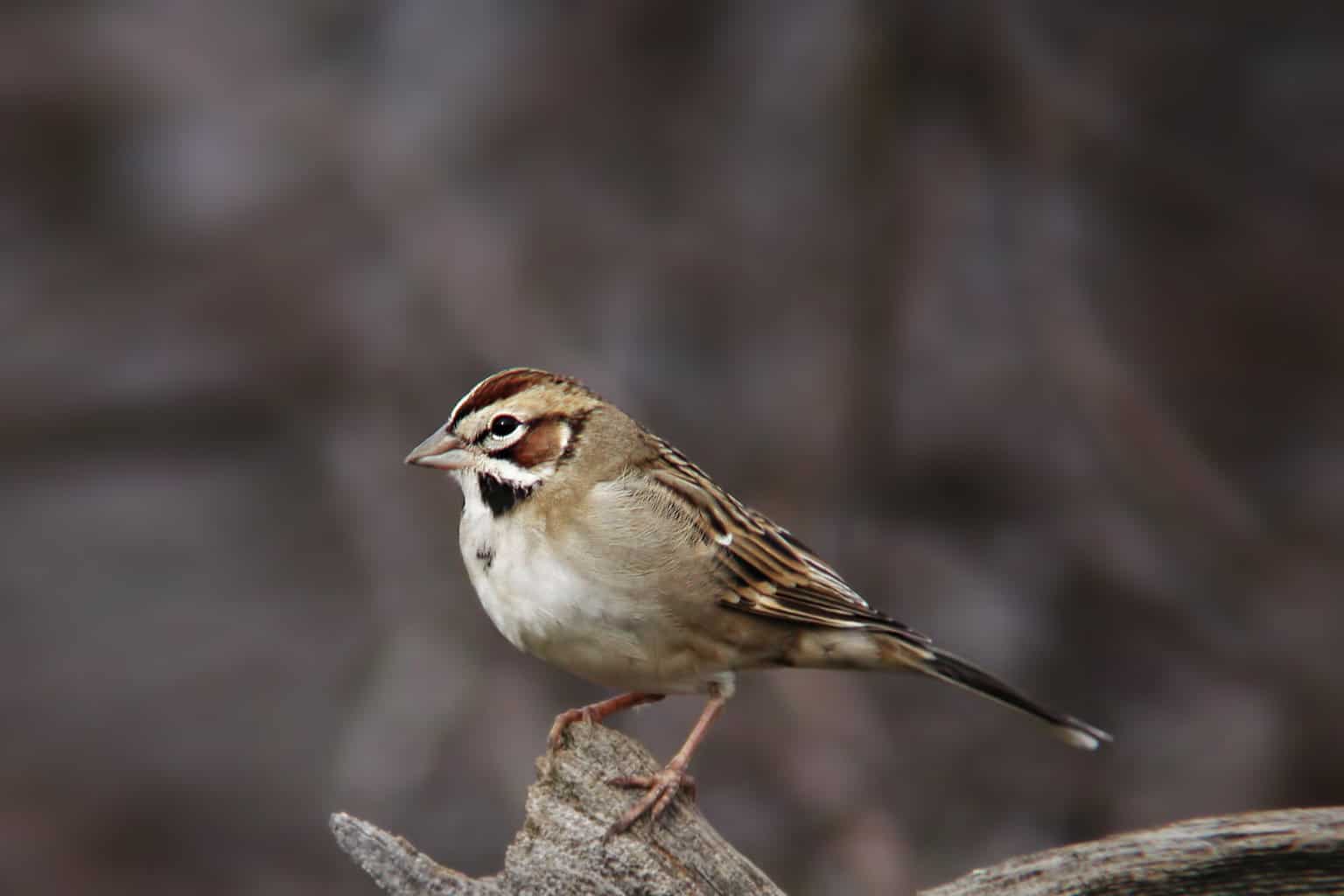
Not to be confused with the lark bunting, the lark sparrow is a very large, handsome sparrow with a pronounced black eyeline, rufous crown, and stout bill. They also have white tips on their long tails that become especially apparent when in flight.
Lark sparrows are found year-round in the southern half of Texas but are only seen in the north during the breeding season.
Dark-eyed Junco
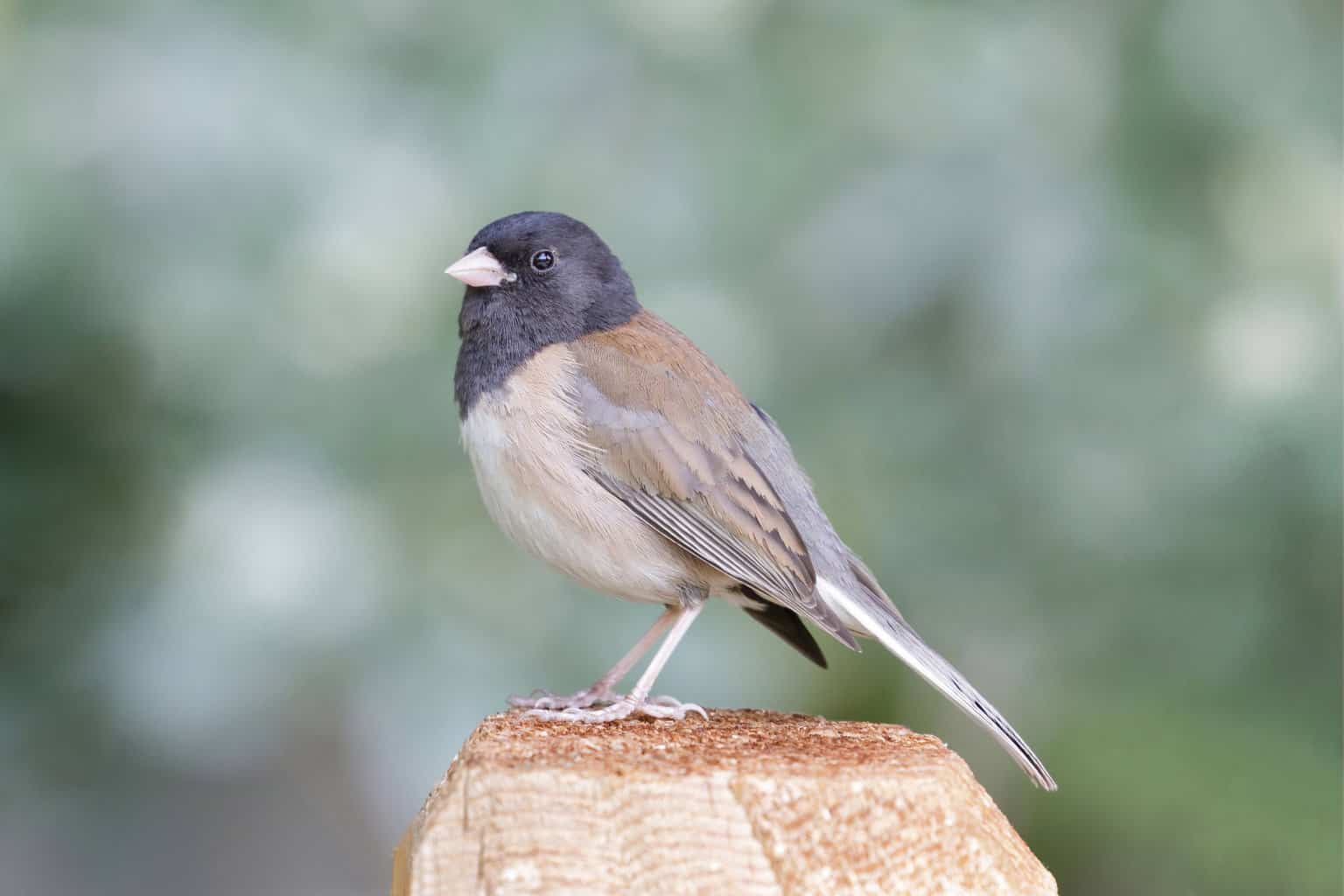
Dark-eyed juncos are sometimes known as ‘snow birds’ because they are so hardy. While they appear in huge flocks further north, Texas hosts a relatively modest population.
All six subspecies of dark-eyed juncos can be found in Texas, each of them with a slightly different appearance. See how many different types you can attract to your backyard feeder!
Song Sparrow

Song sparrows may be the most common sparrow in the United States, but they only just make the top 10 in Texas! Purely winter birds here, their distinctive song is the best way to tell them apart from other brown-streaked species.
Song sparrows can be seen both in the country and in towns, and scientists have discovered that this common bird can change its song according to its location!
Field Sparrow
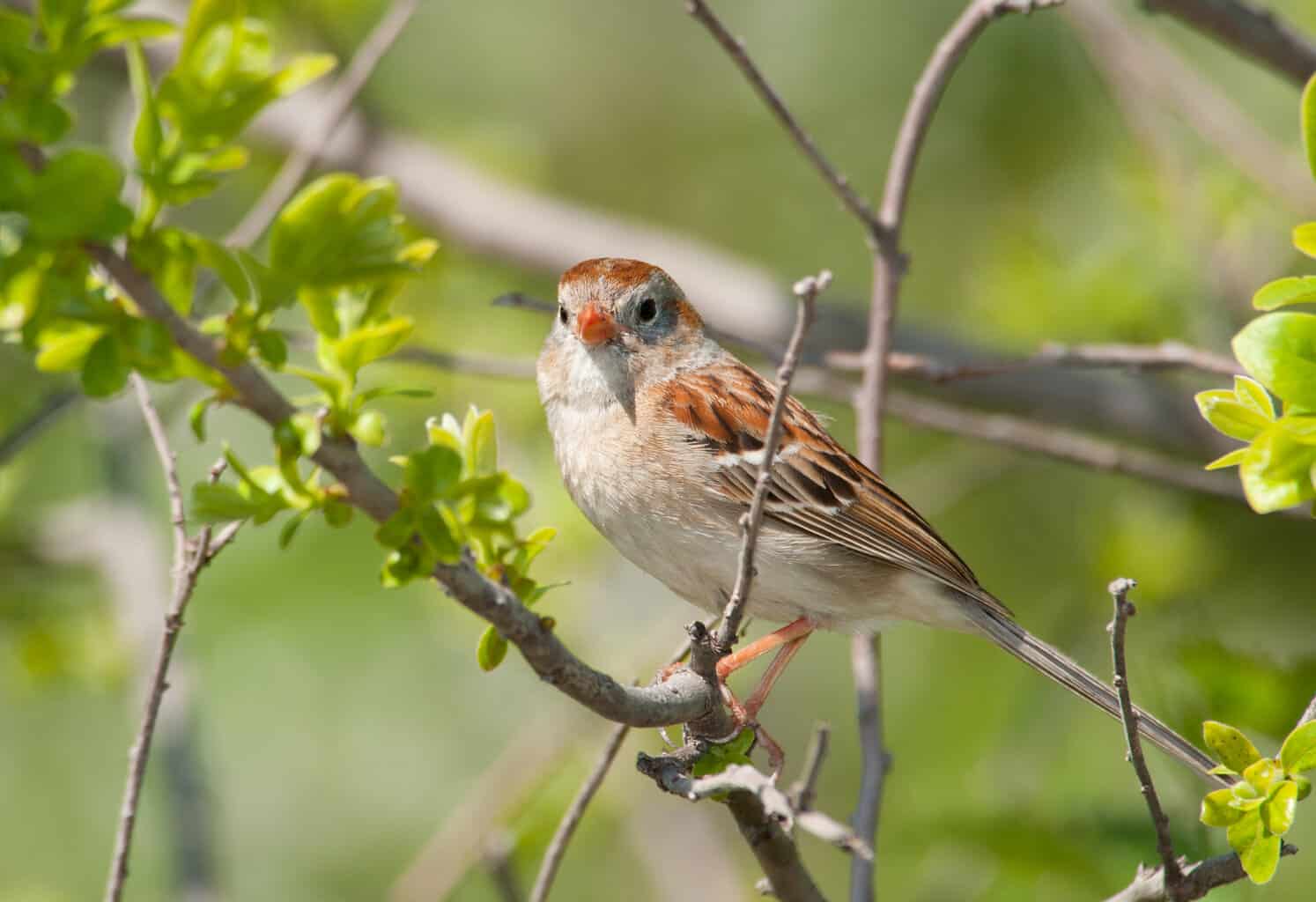
Field sparrows are pinkish-brown birds whose song sounds a bit like a bouncing ball coming to a stop! True to their name, they enjoy life out in the open countryside but can be attracted to backyard feeding platforms, too.
Although a few field sparrows remain in Texas for the breeding season, the vast majority fly north for nesting. This means that the winter months are by far the best time to see these birds here.
Spotted Towhee
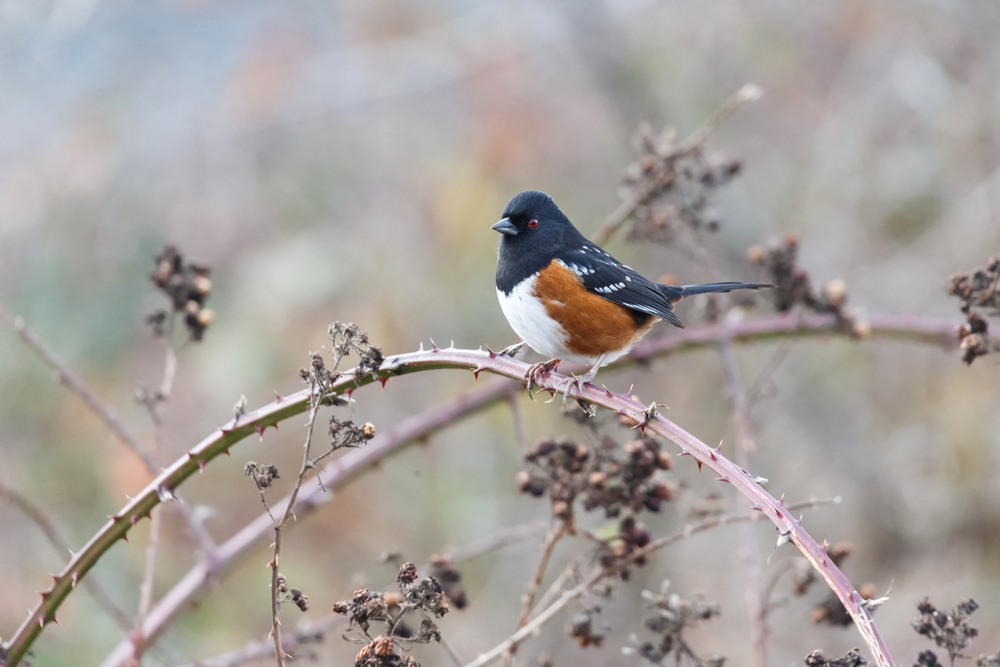
Spotted towhees have to be one of the most beautiful members of the New World Sparrow family. Their red eyes, rusty flanks, white chest, and spotted wings make them a favorite among birding enthusiasts.
These towhees are also some of the largest sparrows and behave a little bit like a thrush – scratching around in the undergrowth looking for seeds and insects.
While most spotted towhees are merely winter visitors in Texas, a few remain here for breeding, too.
Olive Sparrow
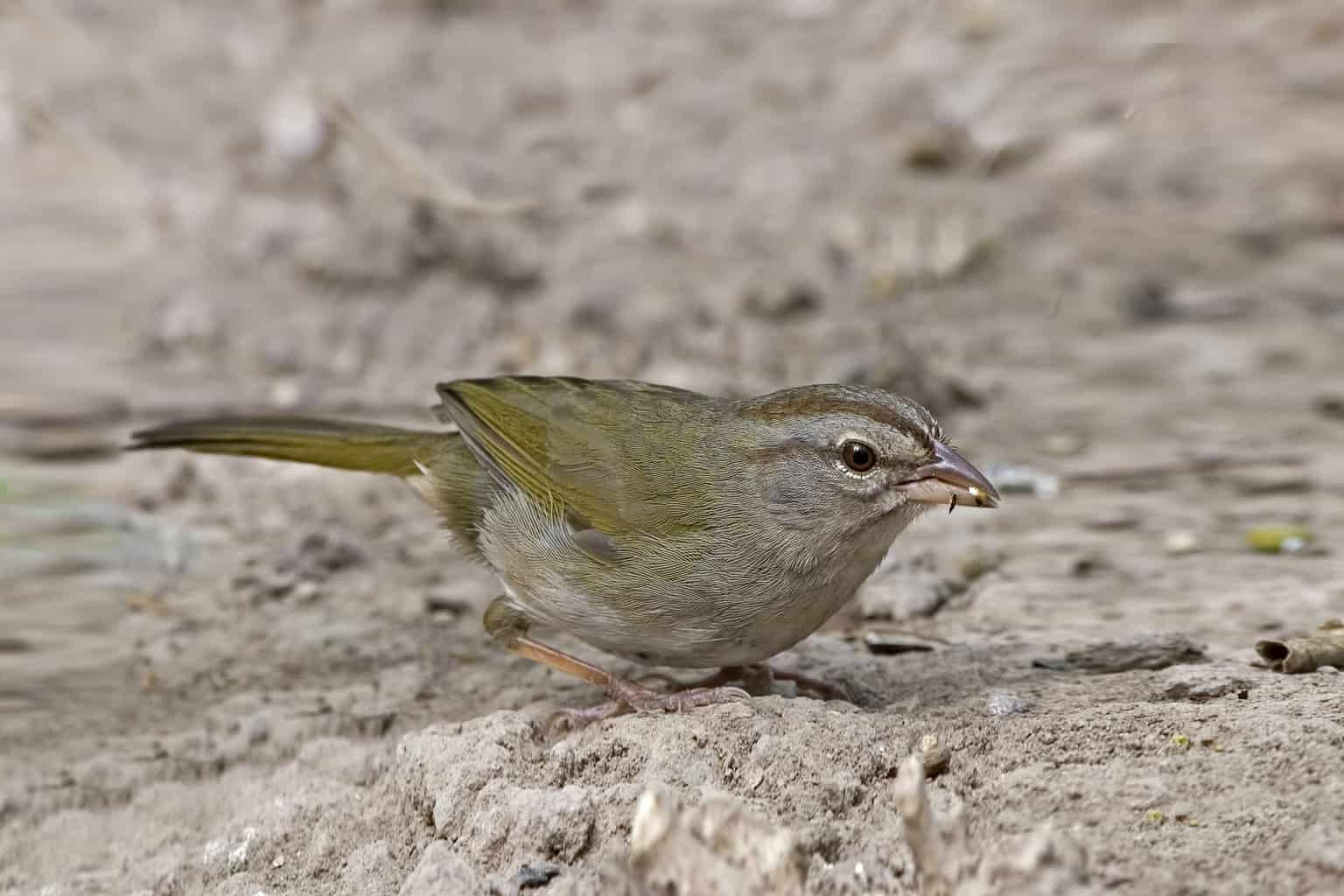
Texas is the only state in the US where you’ll find the olive sparrow, a pretty little bird with an olive green back.
You’ll only find olive sparrows in the southeastern corner of Texas where they spend the entire year hiding or foraging on the ground in brushy woodlands.
These shy birds don’t tend to flock but instead prefer to live in pairs. They’re difficult to spot and are most easily located by their song.
Vesper Sparrow

Vesper sparrows can easily be confused with savannah sparrows, but are substantially larger, and have longer tails. They’re also much rarer than their cousins in Texas.
You’ll only find vesper sparrows during the winter here, and their numbers have declined by 37% over the past 50 years.
It’s thought that modern farming practices and agrochemicals are largely to blame for their plight.
Swamp Sparrow
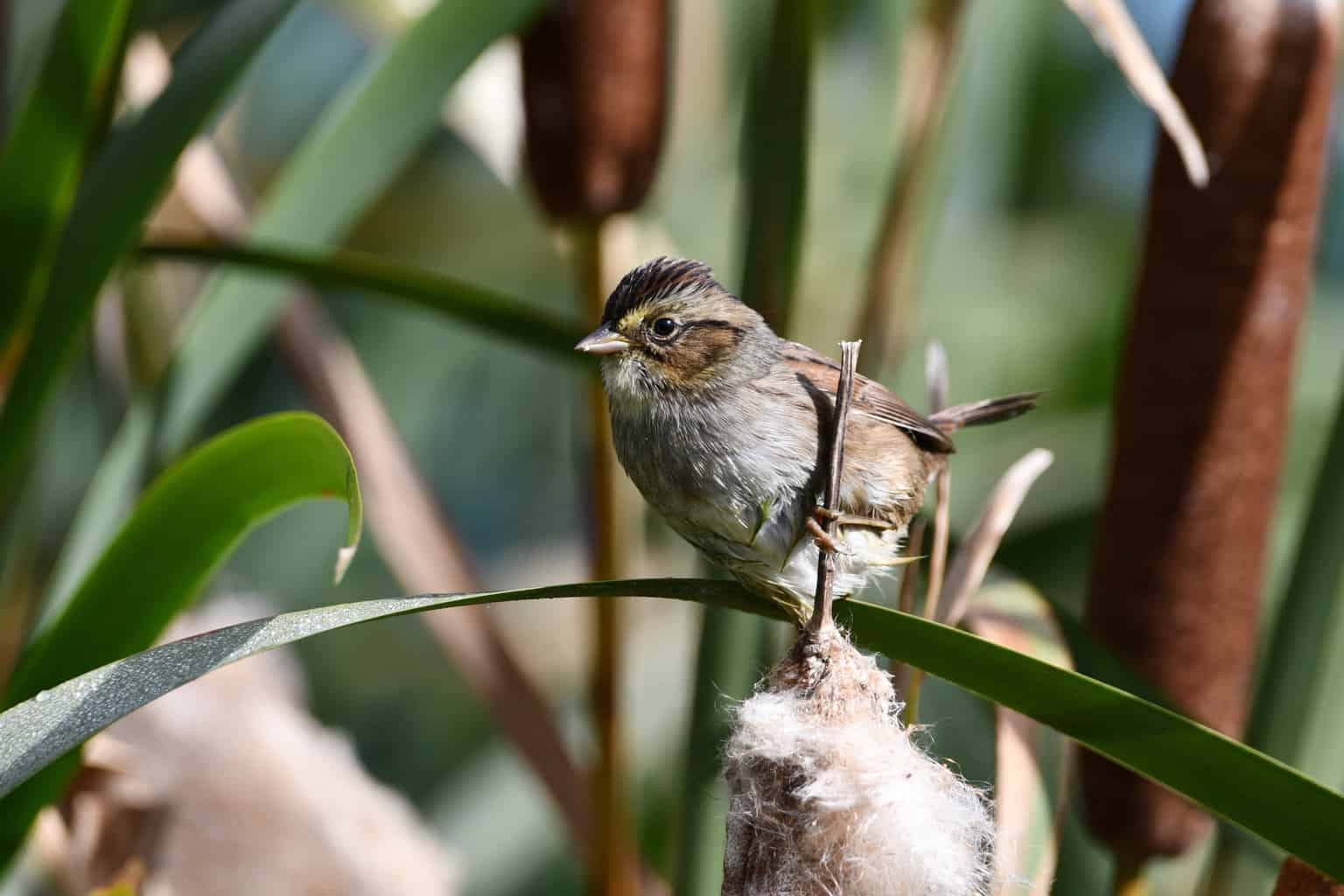
As you might expect, swamp sparrows enjoy hanging out in watery habitats. Swamps, marshes, and grassy wetlands are some of their favorite domains, but during the winter they can also be found in other types of grasslands.
It’s during the winter that swamp sparrows reside in Texas, but you may also see more of them during the spring and fall migratory seasons when some of them fly to and from even warmer winter grounds in Central America.
Swamp sparrows, as well as other species, may be tempted to visit your backyard if you offer them a garden pond or bird bath.
Black-throated Sparrow
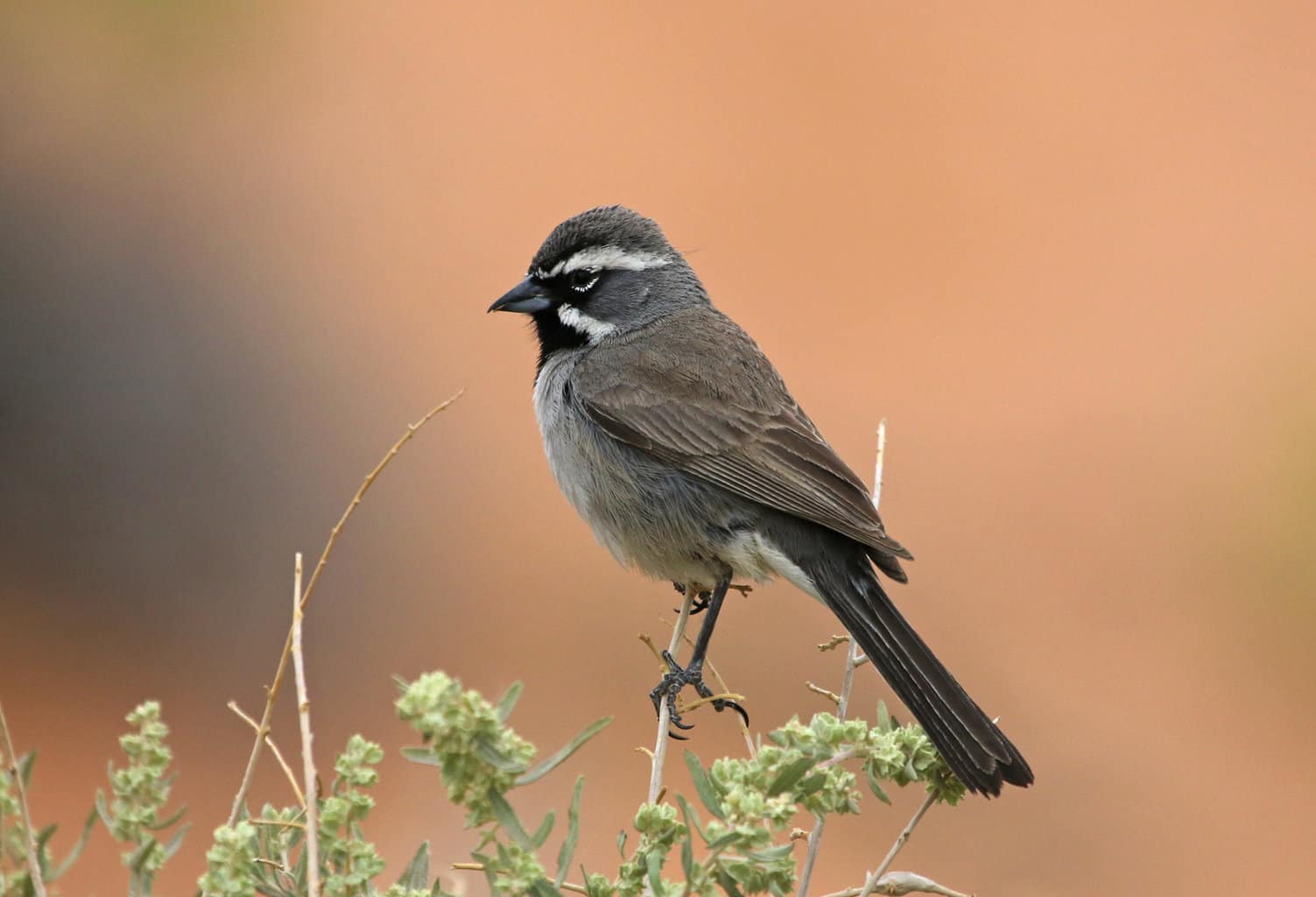
Black-throated sparrows are handsome and distinctive-looking birds that can be found in Texas year-round. Their love for drylands has earned them their other common name ‘desert sparrow’.
Sadly, black-throated Sparrow populations have declined by 54% over the last 50 years due to habitat loss. Protecting wild brushlands will prove essential for the survival of this iconic species.
Rufous-crowned Sparrow
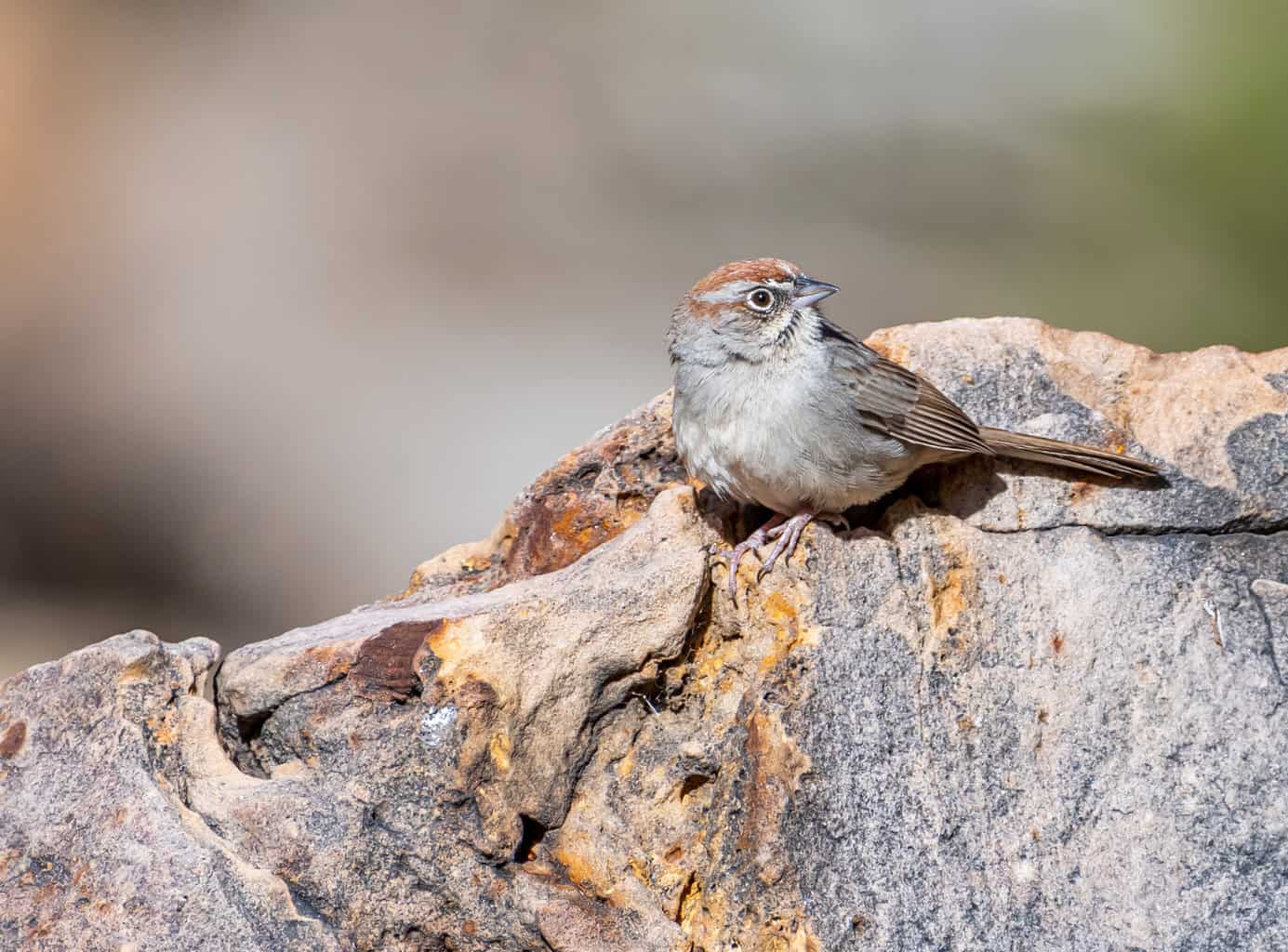
Another sparrow of dry, deserted country, the rufous-crowned sparrow does indeed have a rusty red cap and eyeline.
You’ll mainly find the rufous-crowned sparrow on the ground, foraging among shrubby thickets.
Rather than migrating, these birds tend to remain in similar localities in western Texas throughout the year. Climate change, however, has been forcing birds from their old territories to more northerly regions in recent years.
Harris’s Sparrow

Harris’s sparrows are fairly easy to recognize by their black cap and throat that’s present to some degree throughout the year in both sexes. These large sparrows often form mixed flocks with other species such as white-throated and white-crowned sparrows.
You’ll only find this uncommon bird in the northern half of Texas during the colder months – the most southerly point of their winter grounds. In summer, they fly all the way to the Arctic tundra in Canada for breeding!
Canyon Towhee
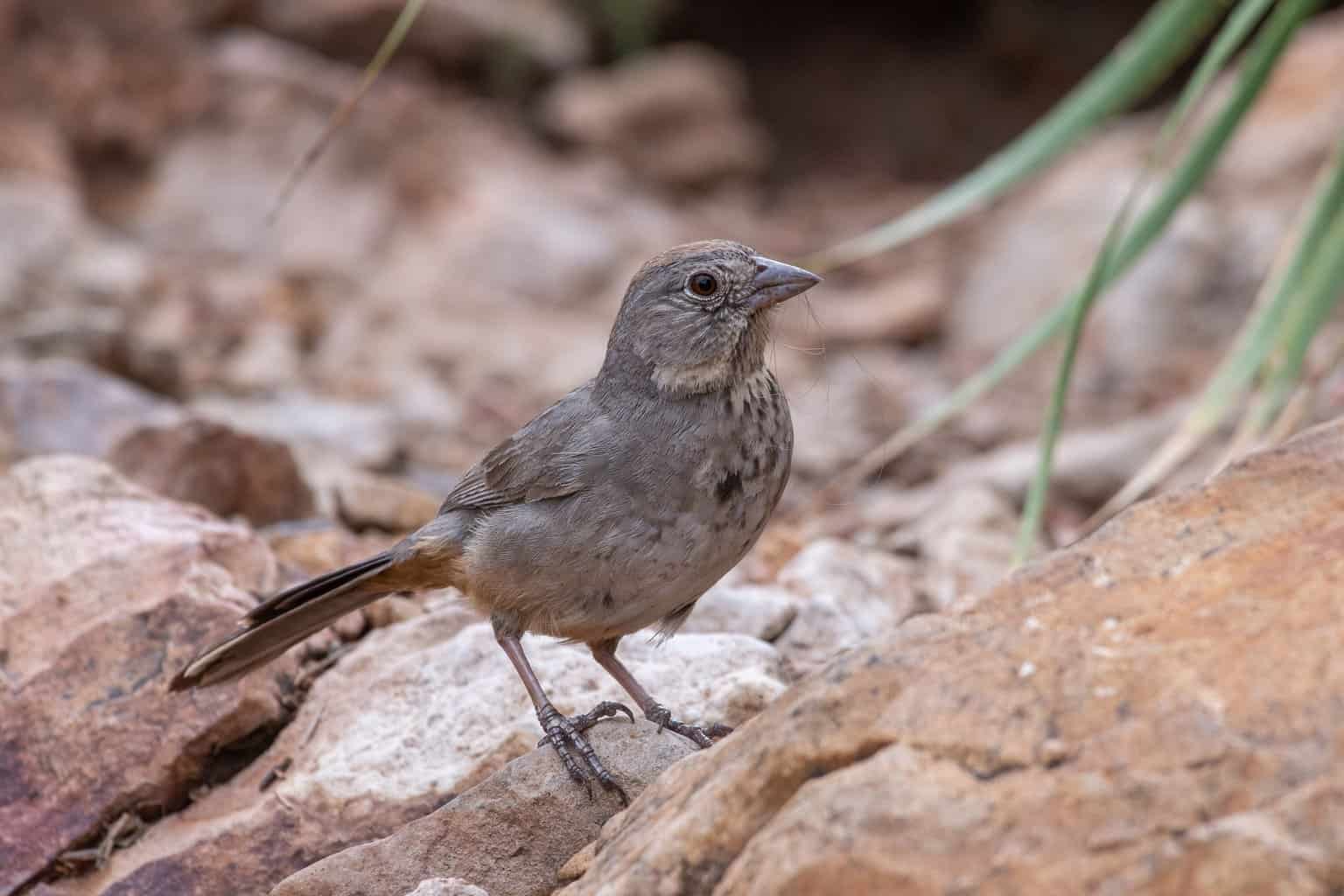
Canyon towhees are unusual sparrows in that they don’t migrate, and can only be found in confined regions of desert scrub. Their harsh, clattering calls can be heard in their native range of midwestern Texas.
They can be told apart from other towhees by the distinct necklace of dark spots on their yellow throat. With a wingspan of nearly a foot across, they’re also among the largest of all New World sparrows.
Clay-colored Sparrow
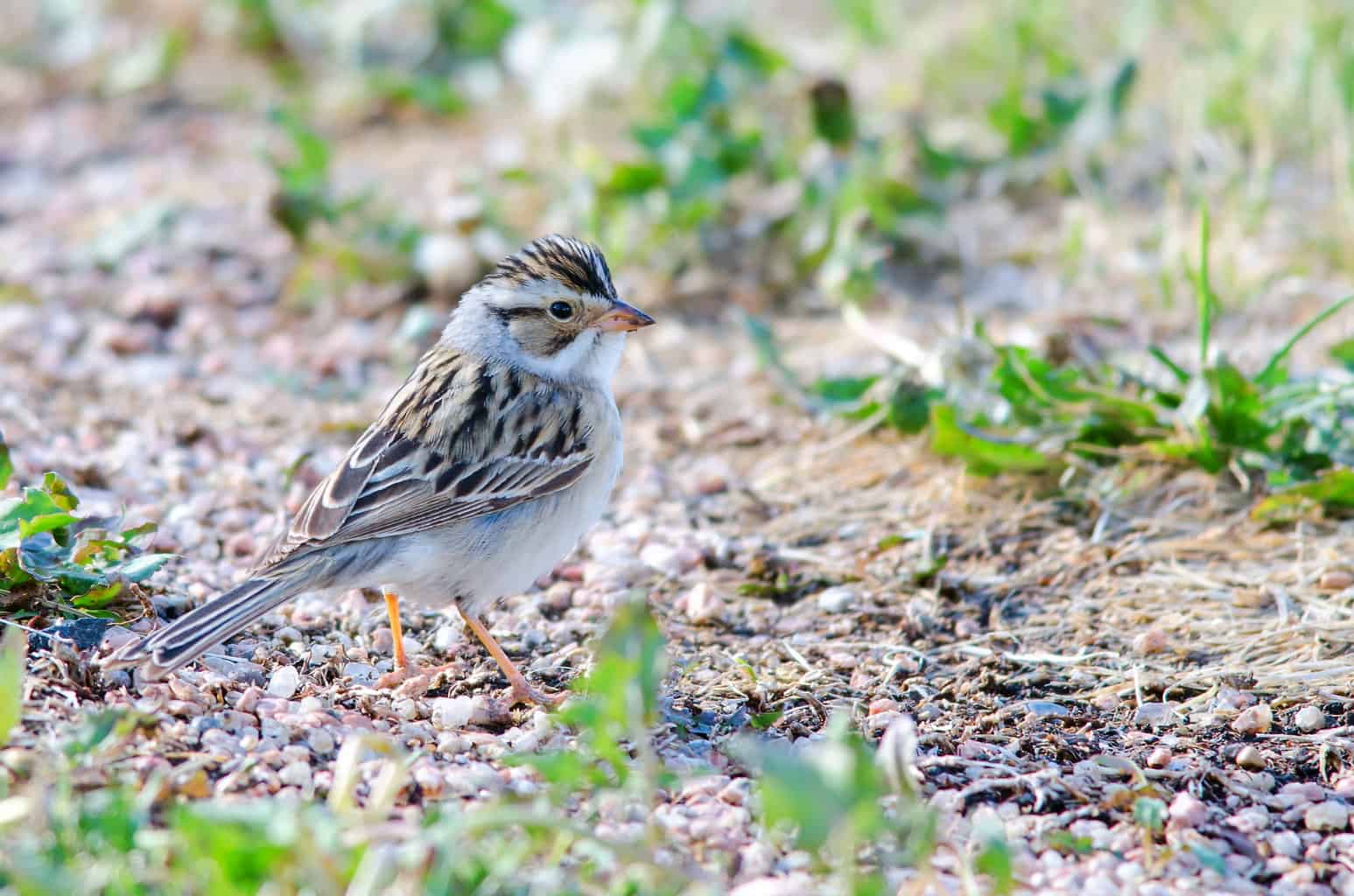
The clay-colored sparrow is a bird that must enjoy migrating! The southeastern tip of Texas is the only place in the US where these birds can be found in winter. The rest of them fly to Central America.
The name clay-colored refers to this bird’s winter plumage – the color you’ll see if you spot these birds in the Texan winter.
In April, their clay-colored bellies turn to white, and these birds can be seen in larger numbers passing through the entire state on their way to their northerly breeding grounds.
Grasshopper Sparrow
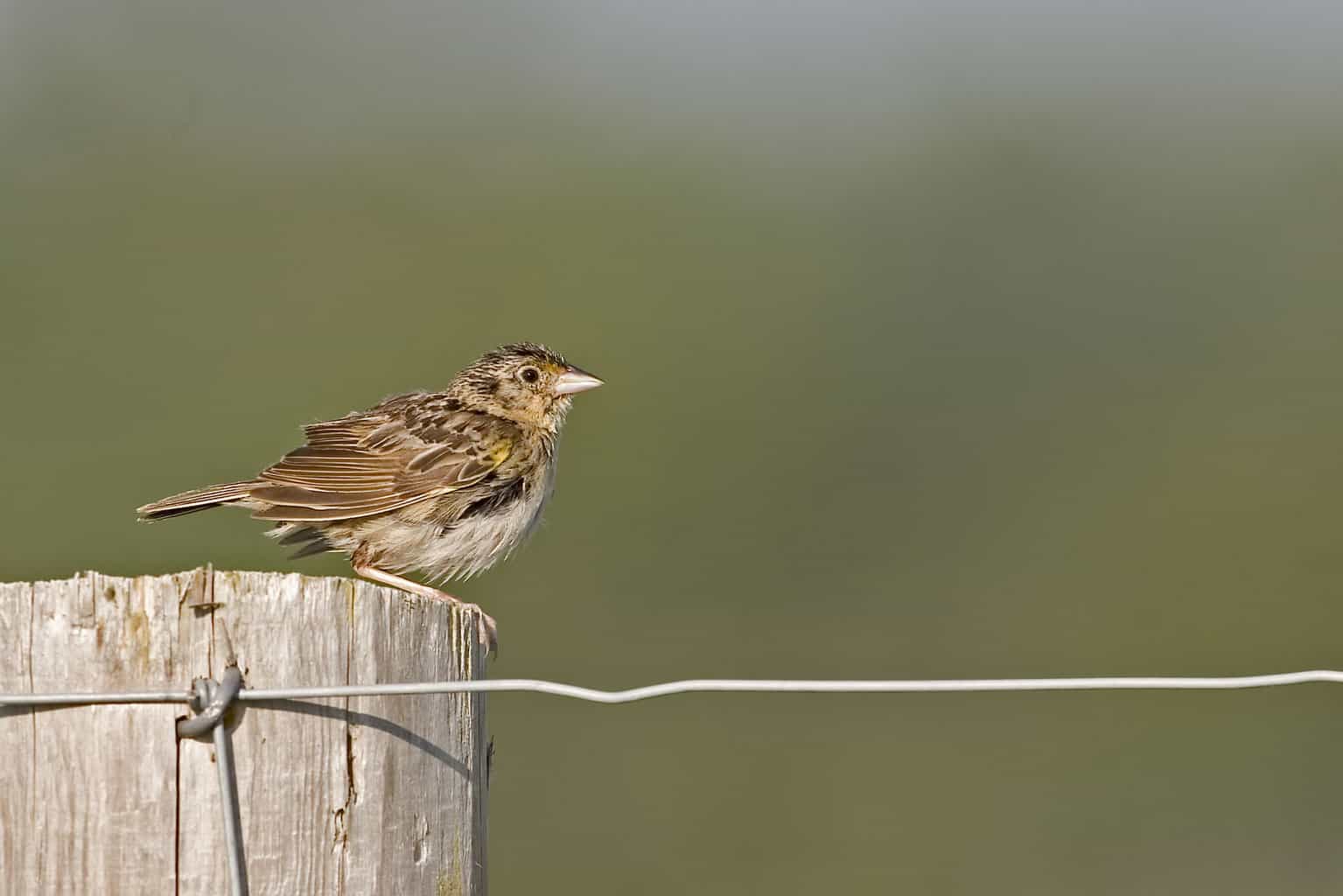
The grasshopper sparrow is a tiny species that sounds more like an insect than a bird. They also love eating grasshoppers in their native, dry grassland habitats.
While they are highly secretive birds, they can be identified by their yellow-orange belly, large head, and stout bill.
Grasshopper sparrows have been among the worst affected birds by modern agriculture, their numbers crashing by nearly 70% over the past 50 years. They can be found in some parts of Texas throughout the year.
Cassin’s Sparrow

Cassin’s sparrow is almost without a field mark and appears very similar to both the song sparrow and Botteri’s sparrow. Learning their metallic-sounding song is a good way to identify them.
These desert-loving birds are present year-round along the southern border with Mexico and can be found breeding throughout most of Texas during the summer, too.
Fox Sparrow

One of the largest types of sparrows in North America, fox sparrows also have an unusual speckled chest and yellowish bill, rather like a thrush.
These birds are only present in Texas during the winter when they can be found scurrying about in the undergrowth in search of insects, seeds, and other tasty morsels to eat!
Lark Bunting
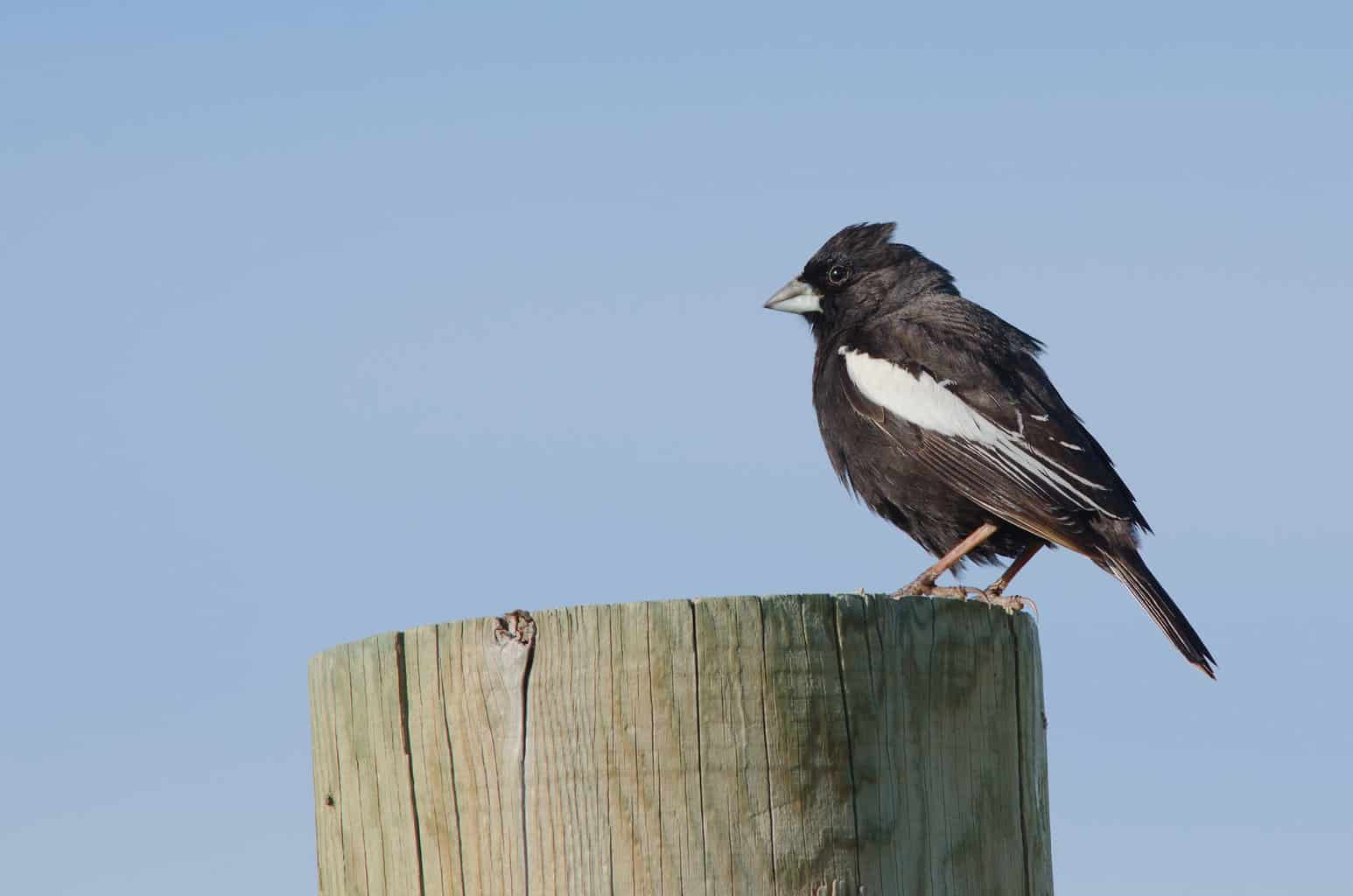
Between March and July, the breeding plumage of the male lark bunting makes him appear quite unlike any other sparrow. A jet-black body, contrasted by clean, white wing and tail feathers, is a sight to behold.
Sadly, it’s only on the northern frontiers of Texas where you can see them in all their glory since the rest of the state is merely a wintering ground for these birds.
Out of the breeding season, the male looks much like the female – light brown, with a streaky breast.
Eastern Towhee
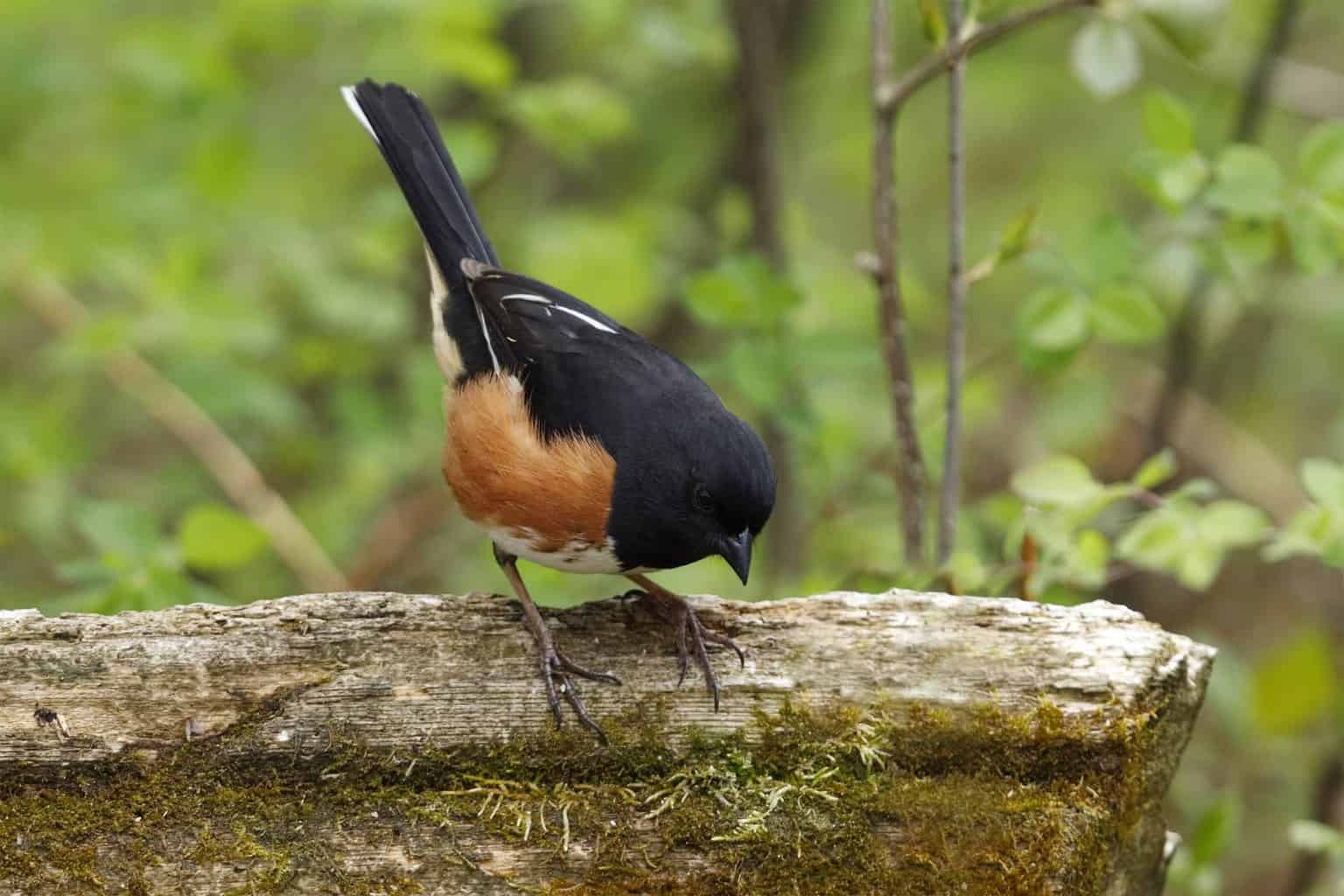
A close relative of the spotted towhee, eastern towhees are, unsurprisingly, much more common further east. Central Texas is one of the few places where the territories of the two species overlap, making identification tricky.
The key difference is that the eastern towhee lacks the white wing spots and bright red eyes of its spotted cousin. To confuse matters further, a rare hybrid between the two species is also possible!
Seaside Sparrow
As their name suggests, seaside sparrows are coastal birds and can be found all along the Texas coastline. Their favorite habitat is salt marshes, where they can be seen hiding among tall vegetation.
Their defining characteristics are their yellow eyebrows and a very long bill that they use for plucking insects and mollusks from the mud at low tide.
LeConte’s Sparrow
A close relative of the grasshopper sparrow with a similar appearance and call. But Leconte’s sparrow is even smaller than its cousin and prefers wet, marshy habitats instead of dry grasslands.
These tiny birds are also merely winter visitors in the eastern half of Texas, unlike grasshopper sparrows which sometimes remain to breed in Central Texas during the summer, too.
Green-tailed Towhee
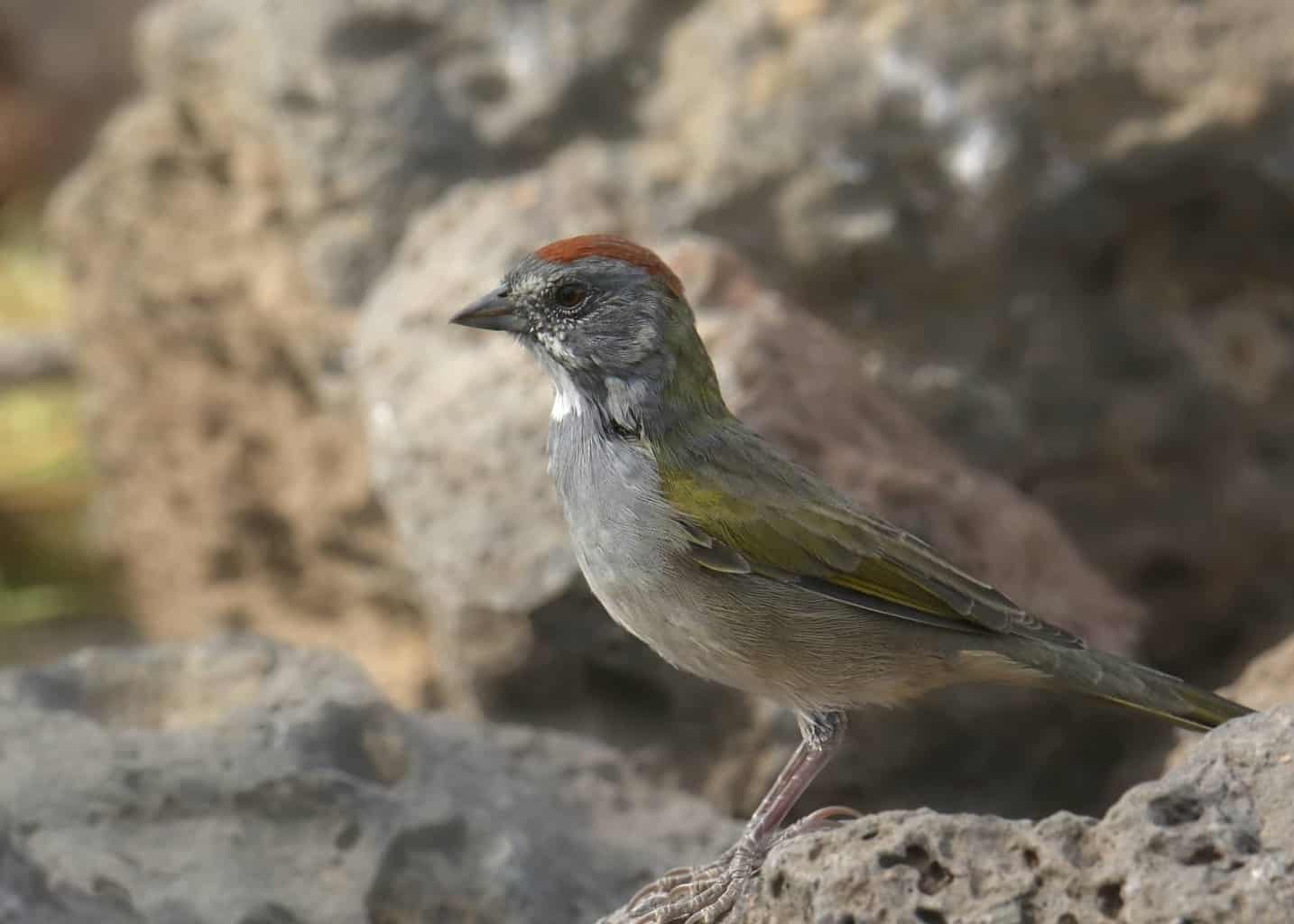
The green-tailed towhee is an exotic-looking, unusually colorful sparrow with a green back, and a rufous crown.
Texas is one of only four states where these birds overwinter in the United States, and a small breeding population can also be found amid the high mountains in the southwest of the state.
Listen out for its distinctive mewing call to help locate it among the dry, brushy habitats that they prefer.
Brewer’s Sparrow
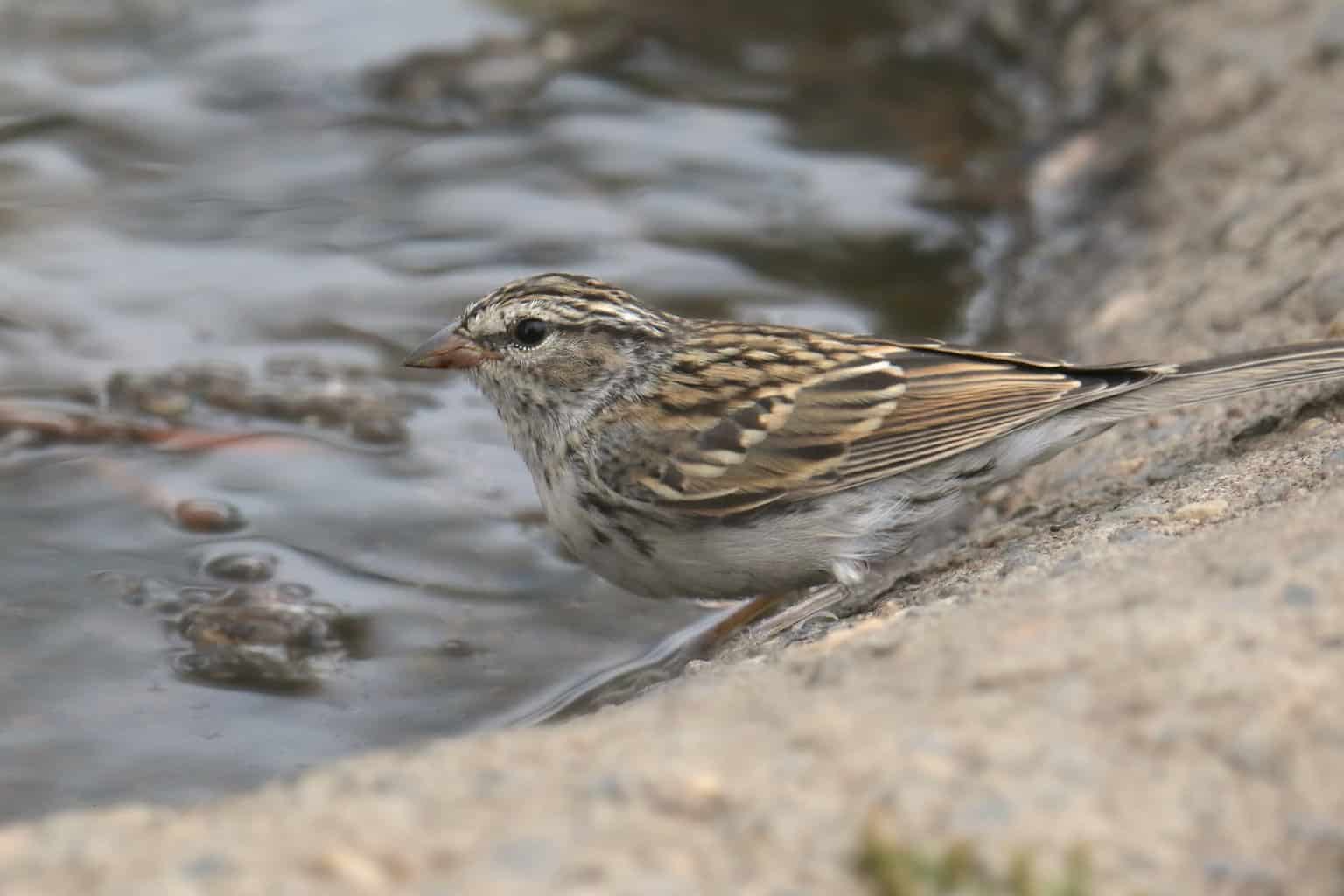
Brewer’s sparrow is often quoted as the smallest sparrow in North America. Weighing an average of 0.37 ounces, they’re around five times lighter than a large sparrow such as a canyon towhee!
The southwestern corner of Texas is the only part of the state where you’ll see Brewer’s sparrow during the winter, although the northwest also hosts small populations during the migratory seasons.
Rarely Spotted Sparrows In Texas
According to bird watchers’ reports, the following eight sparrows have been spotted by less than one in a thousand bird watchers in Texas. All of them are regional, and some of them are also simply very rare. Within Texas, all of the following birds should be considered prized sightings!
Black-chinned Sparrow
The diminutive black-chinned sparrow is a rather rare bird of arid hillsides in the southwest.
In Texas, they can be found year-round, but only found on the middle western fringes of the state, usually among dense patches of dryland vegetation.
The black chin that this sparrow is named after is only displayed by males between April and August. During the winter, the impressive black beard is cast aside, and he returns to looking more like the gray-headed female.
Nelson’s Sparrow

It’s only in the southeastern corner of Texas that you’ll find Nelson’s sparrow, a close relative of Leconte’s sparrow. You can tell them apart from their kin by their longer bill and darker color.
Coastal salt marshes are the favorite haunt of this tiny, secretive bird. Until recently Nelson’s sparrow was thought to be the same species as the saltmarsh sparrow, which is absent in Texas.
Botteri’s Sparrow
One of the least common sparrows in the US, Botteri’s sparrow can only be found during the breeding season in two isolated localities.
One population is on the tripoint between New Mexico, Arizona, and Mexico, and the other is in the southeastern tip of Texas.
These birds are easily confused with their cousin Cassin’s sparrow but have longer bills and a flatter crown.
Bachman’s Sparrow
Another sparrow with a confined range, Bachman’s sparrow can only be found on the northeastern edges of Texas where they remain throughout the year.
Bachman’s sparrow is closely related to Cassin’s and Botteri’s sparrows, with the same rusty crown and eyeline. Luckily, their ranges don’t tend to overlap, so identification is made easier!
Sagebrush Sparrow
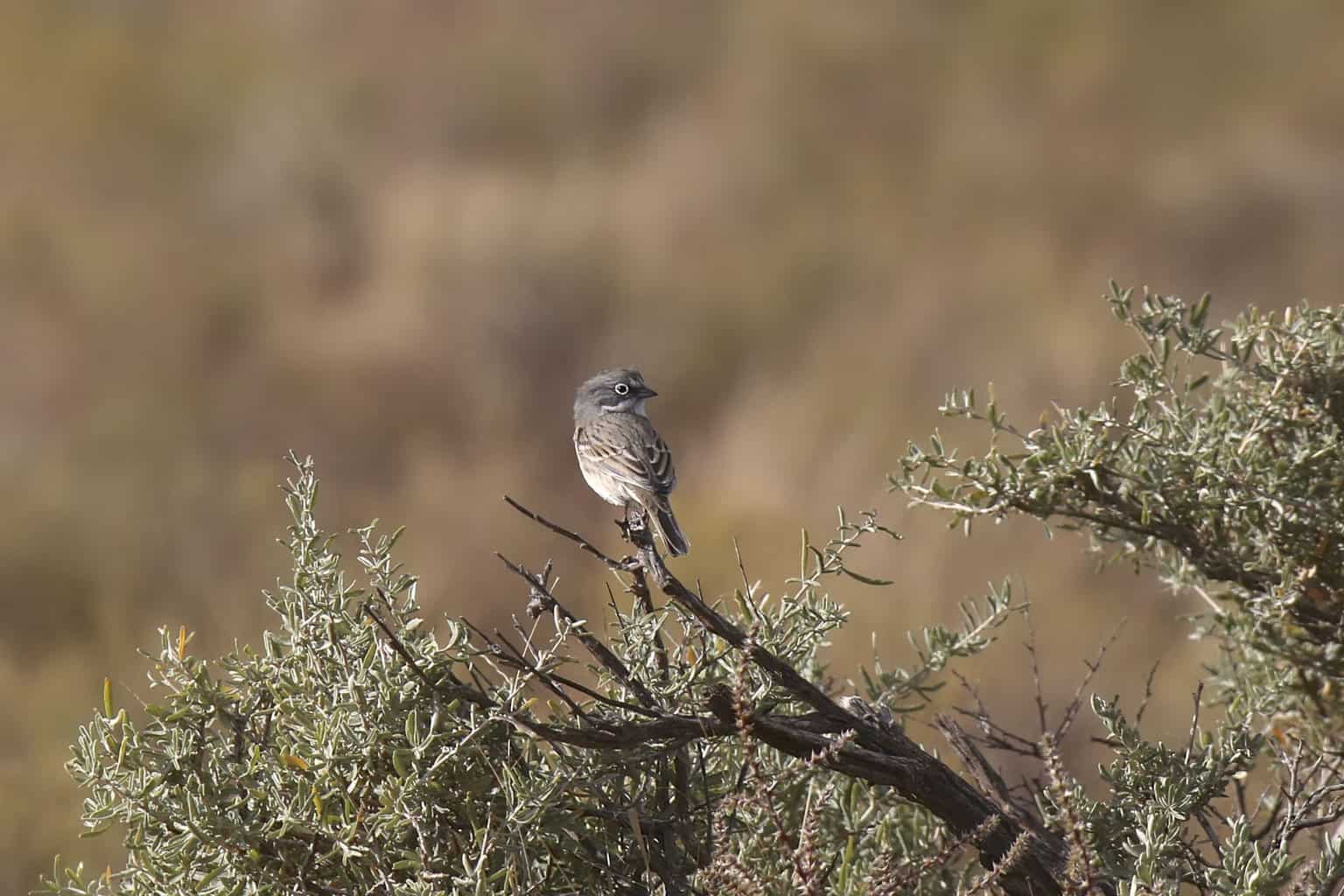
Previously thought to be the same species as Bell’s sparrow, the sagebrush sparrow does indeed enjoy the arid sagebrush and saltbush landscapes of the western states.
These birds are very rare in Texas and can only be seen occasionally in the southwest of the state. Look out for them running between shrubs with their tails held high in the air!
Henslow’s Sparrow
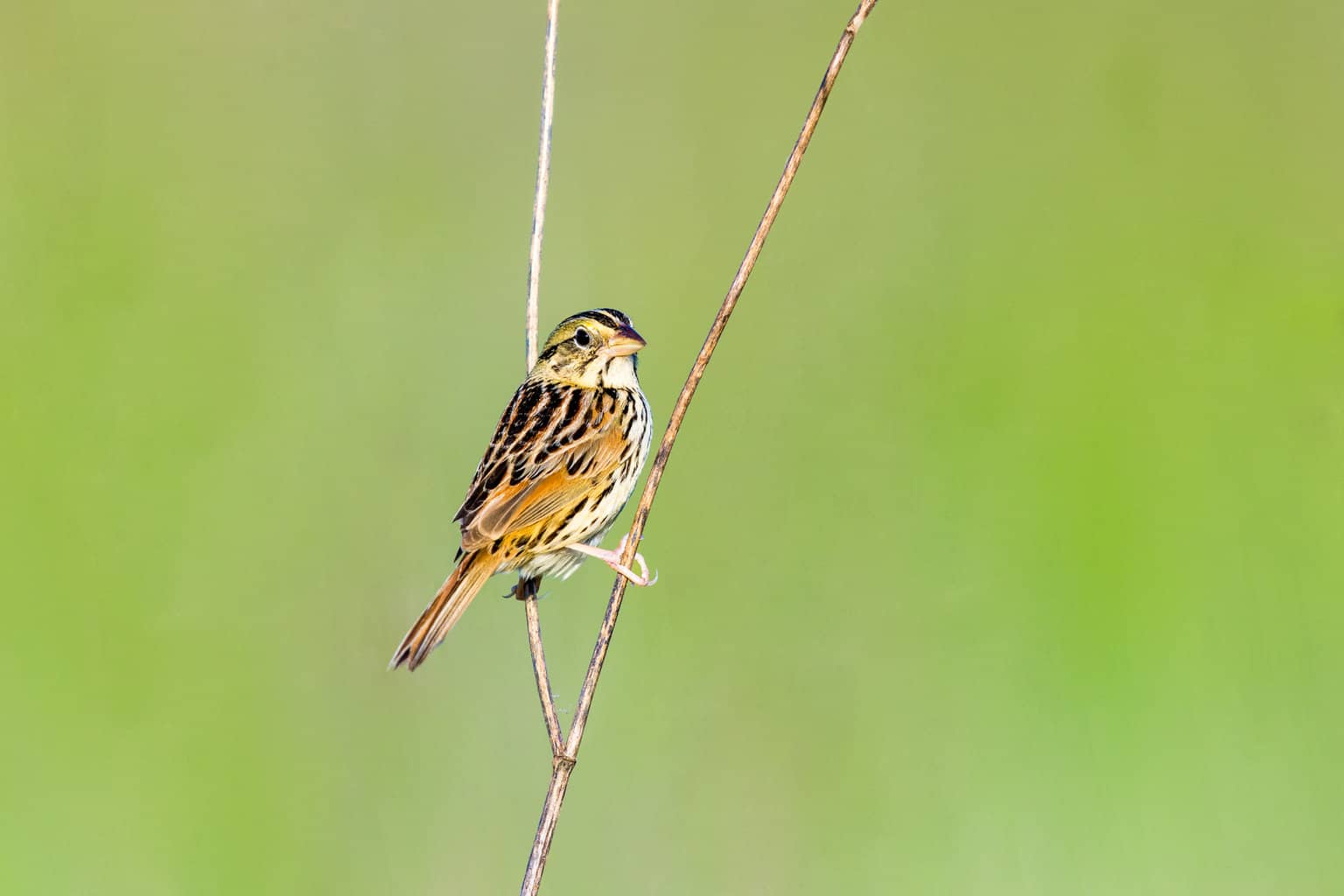
Our final member of the grasshopper sparrow family, Henslow’s sparrow has a light yellow–olive green color and an especially large bill for its tiny body.
These rare birds can only be seen very occasionally in the eastern parts of Texas during the winter. Their favorite habitat is tall-grass prairie and damp grassy meadows, and their numbers have been declining along with their habitat due to human development.
American Tree Sparrow
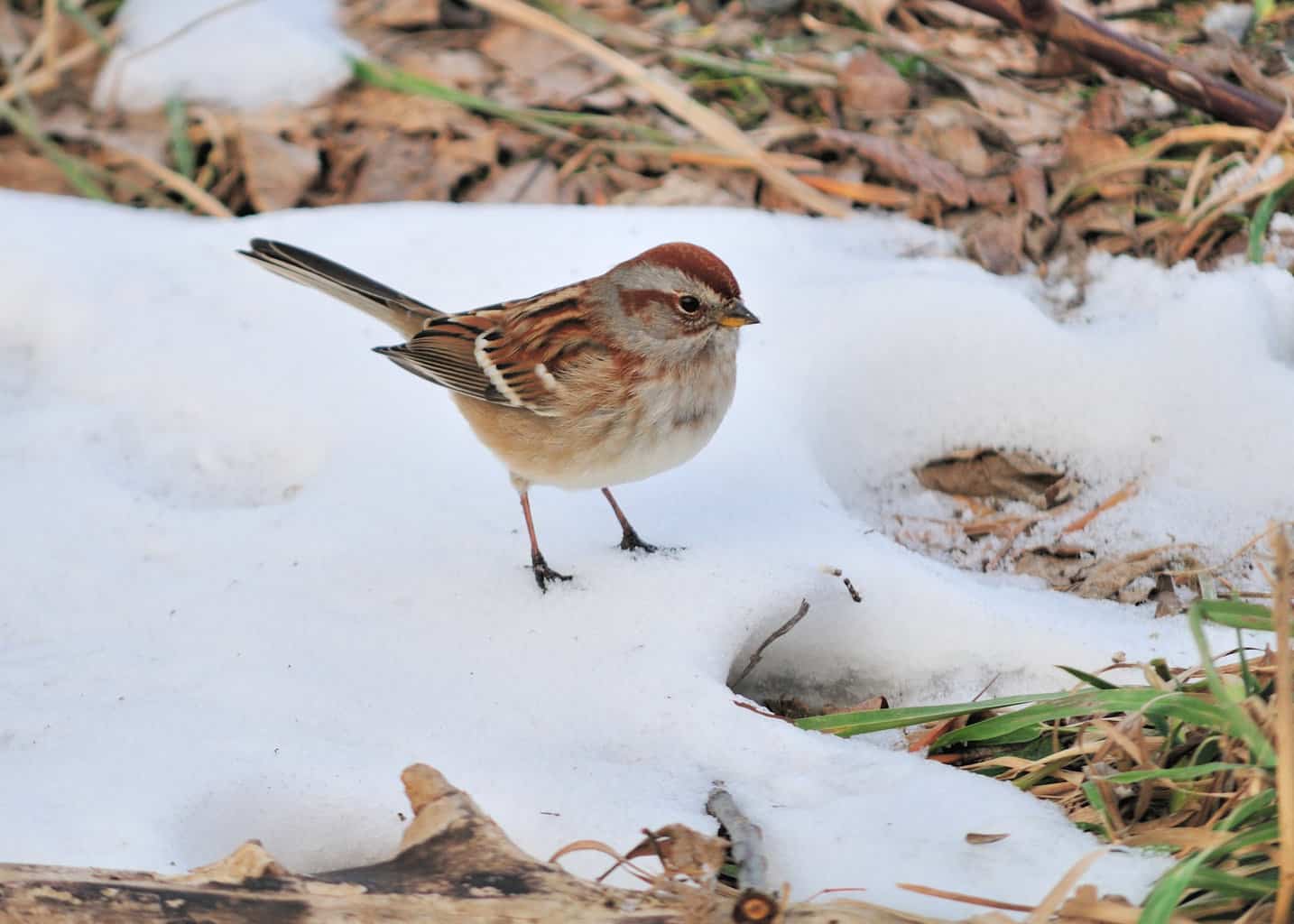
Although the American tree sparrow is a common bird further north, they rarely venture this far to the south. The northern tip of Texas is the only part of the state where you’ll see these birds here.
An odd fact about these birds is that they don’t really like trees at all. They spend much of their time on the ground, and spend their summers breeding in the northern tundra, a landscape devoid of any trees at all!
Their primary field marks are the black spot on the middle of their chest, and their rusty red crown and eyeline.
Baird’s Sparrow
Looking somewhat like a cross between a savannah sparrow and a grasshopper sparrow, Baird’s sparrow is a small, streaky bird with a white belly.
Baird’s sparrow mainly overwinters in Mexico and breeds in the northwest region around Montana, but will occasionally stray into Western Texas, especially on its migratory flights during the spring and fall.
Conclusion
It’s been a lot of fun looking through the incredible diversity of sparrows in America’s second-largest state. No other state comes close in its wealth of sparrows, and some of the species can be found nowhere else in the United States.
Because there are so many sparrows in Texas, I wasn’t able to go into extensive detail about each species. For that, you’ll need to check out my guides to sparrows in the neighboring states of New Mexico, and Arkansas.
But while we’re still in Texas, did you know the state hosts more bird species than any other bar California? Don’t miss our list of 25 of the most beautiful of them, here!

